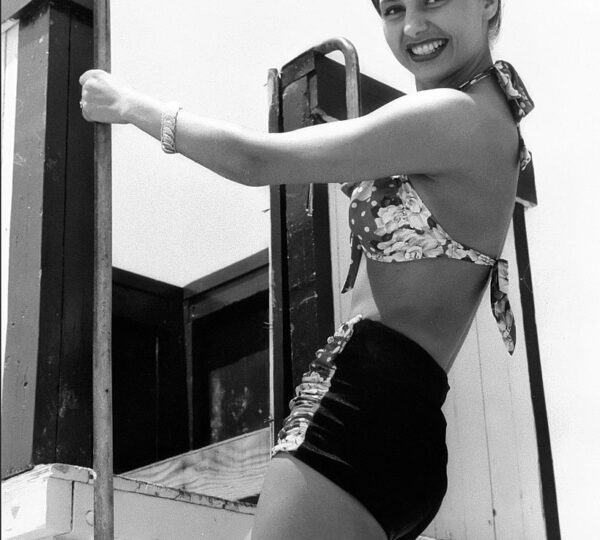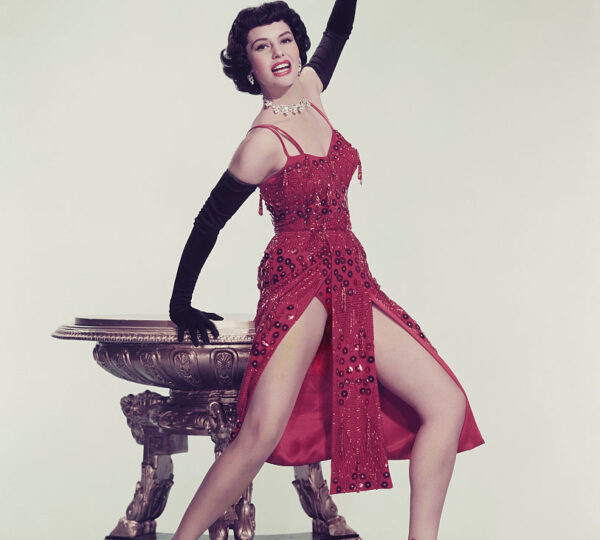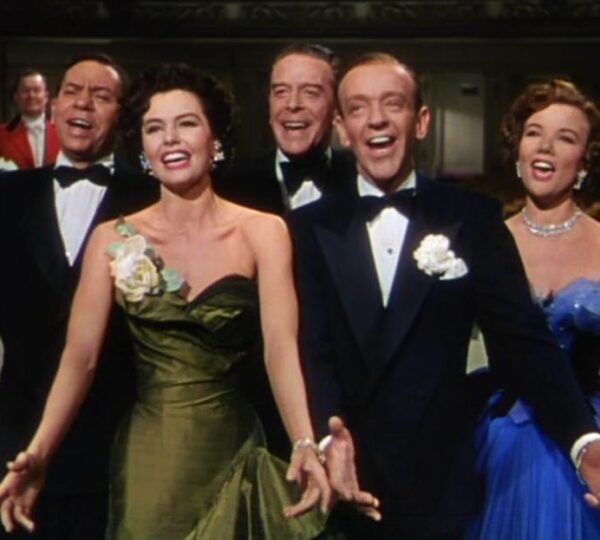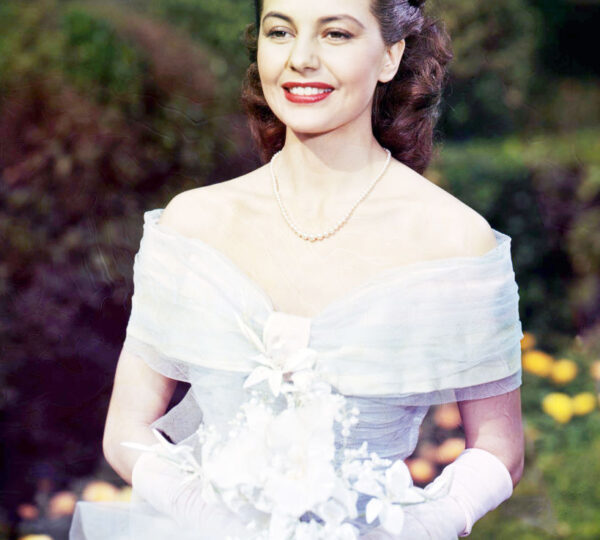There are Hollywood legends… and then there is Cyd Charisse, a woman whose presence on screen did not merely entertain — it mesmerized, elevated, and redefined what a dancer could represent in cinema. Her name still evokes images of sleek movements, silk-smooth legs, captivating poise, and a strength that radiated long before audiences knew the depth of her struggles.
https://googleads.g.doubleclick.net/pagead/ads?client=ca-pub-9153507942483523&output=html&h=90&slotname=9471326216&adk=2757560788&adf=2666337419&pi=t.ma~as.9471326216&w=728&lmt=1763680163&format=728×90&url=https%3A%2F%2Flikya.org%2Ffrom-sickly-to-stunning-the-polio-survivor-who-became-a-hollywood-icon%2F&host=ca-host-pub-2644536267352236&wgl=1&aieuf=1&aicrs=1&uach=WyJXaW5kb3dzIiwiMTAuMC4wIiwieDg2IiwiIiwiMTQyLjAuNzQ0NC4xNzUiLG51bGwsMCxudWxsLCI2NCIsW1siQ2hyb21pdW0iLCIxNDIuMC43NDQ0LjE3NSJdLFsiR29vZ2xlIENocm9tZSIsIjE0Mi4wLjc0NDQuMTc1Il0sWyJOb3RfQSBCcmFuZCIsIjk5LjAuMC4wIl1dLDBd&abgtt=7&dt=1763680163621&bpp=3&bdt=1499&idt=177&shv=r20251118&mjsv=m202511120101&ptt=9&saldr=aa&abxe=1&cookie=ID%3D05495452db20f27d%3AT%3D1763162363%3ART%3D1763680154%3AS%3DALNI_MZbEktlWuFOBlcSiFJH9uHw6q1-wg&gpic=UID%3D0000130cdbf6bd47%3AT%3D1763162363%3ART%3D1763680154%3AS%3DALNI_MZQzmhnMIh-VnCierLlfWavrGvzDQ&eo_id_str=ID%3D16ca53f384f5ea89%3AT%3D1763162363%3ART%3D1763680154%3AS%3DAA-AfjY-_OKUqO826Ucxx5lUFn7y&prev_fmts=0x0&nras=1&correlator=6766926805132&frm=20&pv=1&u_tz=60&u_his=1&u_h=800&u_w=1280&u_ah=760&u_aw=1280&u_cd=24&u_sd=1&dmc=8&adx=269&ady=638&biw=1265&bih=673&scr_x=0&scr_y=300&eid=31095752%2C31095809%2C31095814%2C95376241%2C95376583%2C95376711%2C95372614%2C95377245%2C95376120&oid=2&pvsid=1716358877321744&tmod=7068601&uas=0&nvt=1&ref=https%3A%2F%2Flikya.org%2Ffrom-sickly-to-stunning-the-polio-survivor-who-became-a-hollywood-icon-2%2F%3Ffbclid%3DIwY2xjawOMfuhleHRuA2FlbQIxMABicmlkETFabHl3N2gza0VTV0dSMGd4c3J0YwZhcHBfaWQQMjIyMDM5MTc4ODIwMDg5MgABHgywzWt5UAO60V_XXW2i-nTdct7B_UK25S6DV5NhympGfUeCOHfC3Z-2UNzn_aem_Ry21mhzdHJiM5OaZo-qXtA&fc=1920&brdim=0%2C0%2C0%2C0%2C1280%2C0%2C1280%2C760%2C1280%2C673&vis=1&rsz=%7C%7CeE%7C&abl=CS&pfx=0&fu=0&bc=31&bz=1&pgls=CAEaBTYuOC4y~CAEQBBoHMS4xNjAuMQ..~CAEQBRoGMy4zMS4z&ifi=2&uci=a!2&fsb=1&dtd=187
Cyd Charisse’s journey began not under the spotlights of MGM stages, nor in the glamorous studios of Los Angeles, but in the quiet, dusty atmosphere of Amarillo, Texas, where she was born as Tula Ellice Finklea.
Far from the confident star the world would later adore, little Tula was a fragile child whose future seemed uncertain. Her family often described her as thin, delicate, and constantly battling illnesses. But the challenge that nearly altered her life forever came early: polio.
A Childhood Marked by Illness and Determination
In the early 20th century, before vaccines existed, polio was one of the most terrifying diseases a child could face. For many, it left permanent paralysis. For others, it limited mobility for life. When Tula contracted the illness, the fear in her household was overwhelming.
Her parents watched helplessly as her little body weakened. She struggled with pain, imbalance, and fatigue — symptoms that could have ruined her physical future entirely.
But the Finkleas were not willing to surrender. Her doctors suggested that gentle, controlled movement might help rebuild her muscles. And so, in a desperate attempt to strengthen their daughter, her parents took her to a ballet studio — hoping the structured discipline of dance would help repair what polio had damaged.
What happened next was nothing short of miraculous.

Dance: The Medicine That Saved Her Body and Awakened Her Soul
On that studio floor, the sickly young girl transformed.
She wasn’t strong at first — her legs trembled, her posture wavered — but slowly, day by day, something inside her shifted. Dance healed her physically, yes, but it also awakened a fire she had never known. Ballet became more than therapy. It became her purpose.
As weeks turned to months, Tula grew stronger. Her teachers noticed she possessed a natural extension in her legs, an intuitive grace, and a rare emotional fluidity. Even as a child, she danced not only with her limbs, but with her heart.
Her parents, amazed by her progress, continued her training. And the once sickly girl began to thrive.
The Road to Greatness Begins
By the time she reached her teenage years, Tula had already stepped far beyond the expectations of her small-town beginnings. Talented instructors recognized her potential immediately. They pushed her harder, encouraged her to study abroad, and insisted she could pursue dance professionally — a daring dream for a girl from Amarillo.
But her talent was unmistakable.
She trained in Los Angeles under renowned instructors, absorbing every movement with unmatched discipline. The ballet world widened her horizons, exposing her to techniques from Europe, and soon she traveled to London and Paris, refining her style in classical schools known for producing elite dancers.
She embraced everything — the elegance of ballet, the emotional storytelling of modern dance, the expressive freedom of jazz. These layers would later merge to create her signature movement style: a blend of strength, sensuality, and sophistication that no other dancer of her time could replicate.

The Creation of a Name That Would Last Forever
Her nickname, “Sid,” given by her brother who struggled to pronounce “Sis,” became a charming piece of her childhood identity. But Hollywood required reinvention. As she inched closer to a professional career, she experimented with stage names that sounded European, refined, and artistic — such as “Felia Sidorova”— reflecting the era’s fascination with Russian ballet heritage.
But ultimately, producer Arthur Freed believed her personality and presence deserved something sleek, modern, and memorable. He helped shape the final version:
⭐ Cyd Charisse
A name that would someday be spoken with reverence in the world of film and dance.
Stepping Into Hollywood — Quietly, But Powerfully
Her entry into Hollywood wasn’t flashy. She appeared uncredited in her earliest films, performing as a background dancer in productions like Something to Shout About (1943). She didn’t speak lines. She wasn’t placed front and center. But none of that mattered. Audiences didn’t need to hear her voice to notice her.
Her body communicated everything.
Her presence was magnetic even in silence — an undeniable mixture of discipline, mystery, and elegance. And Hollywood directors recognized a performer who could uplift any scene simply by being in it.

MGM Sees the Spark
During the golden age of cinema, MGM Studios searched relentlessly for dancers who brought both technical skill and cinematic charisma. When they observed Cyd Charisse, they knew instantly they had found someone rare.
She moved like a dream, combining ballet purity with Hollywood sensuality. She was the kind of dancer whose lines seemed infinite, whose control was flawless, and whose expression felt deeply human.
MGM signed her, placing her among the elite group of dancers the studio was cultivating as stars.
But even then, Cyd was not content to simply exist in the shadows. She pushed herself, committed to each rehearsal, and absorbed choreography with razor-sharp precision. It was only a matter of time before she would break through the screen and into the public consciousness.
The First Big Break: Dancing With Gene Kelly
Her breakthrough happened when she appeared alongside Gene Kelly in Ziegfeld Follies (1945). The role was small, but her effect was enormous. Critics and audiences caught their breath watching her. Something about her — the silky quality of her movements, her statuesque presence, her expressive face — created a lasting impression.
She wasn’t just a dancer.
She was a force.
A Moment That Changed Cinema: “Singin’ in the Rain”
Then came the role that sealed her place in Hollywood history.
In 1952, Cyd Charisse appeared in Singin’ in the Rain, performing in the legendary “Broadway Melody” ballet sequence. She didn’t utter a single line of dialogue — nor did she need to. Wearing a shimmering green dress, her raven-black hair cascading down her back, she moved with seductive confidence that electrified the screen.
Her presence was hypnotic.
Her legs, which would become iconic, appeared endless. Her strength, precision, and controlled sensuality created one of the most unforgettable dance moments in cinema history.
That performance didn’t just make her famous — it immortalized her.

A Dancer Built for Legends: Astaire and Kelly
Cyd Charisse stood in a rare position: she danced with both Fred Astaire and Gene Kelly, two of the most revered dancers to ever appear in film. Few performers could match either man — but Cyd matched both.
Astaire brought elegance, sophistication, and impossibly smooth transitions.
Kelly brought athleticism, masculine energy, and sharp, powerful movements.
Cyd Charisse blended perfectly with both styles.
Her collaboration with Astaire in The Band Wagon (1953), particularly the “Dancing in the Dark” number, remains one of cinema’s most romantic and technically stunning pieces. Astaire famously praised her as:
⭐ “Beautiful dynamite.”
She had the delicate precision of a ballerina combined with the expressive emotionality that Hollywood required — making her a dream partner for every choreographer she worked with.
Despite being one of Hollywood’s most mesmerizing performers, Cyd Charisse was known for her remarkable humility. Unlike many stars of her era who embraced the indulgent lifestyle of fame, Cyd carried herself with the discipline of a ballerina and the quiet dignity of a woman grounded in her values. Her life off-screen was as graceful as her performances — structured, private, and deeply rooted in family.
A Woman Who Brought Discipline Into Every Corner of Her Life
Cyd did not chase scandals. She didn’t get swept into the chaos of Hollywood parties, nor did she seek attention from tabloids. While many glamorous stars of her time burned brightly and crashed quickly, Cyd stood for something far rarer: endurance, consistency, and character.
Her colleagues often said that she worked with an unshakable devotion to her craft. She approached every rehearsal as if it were her first chance to prove herself. Choreographers admired her willingness to repeat a sequence endlessly until it was flawless, her ability to transform direction into art, and her deep understanding of storytelling through movement.
Even long after she achieved fame, she maintained the discipline she learned as a sickly child rebuilding her body through ballet. That discipline became her trademark — visible in every step she took.
A Love Story Rooted in Stability: Cyd Charisse and Tony Martin
In 1948, Cyd’s life changed forever when she married singer Tony Martin. Their love story was not the dramatic, highly publicized whirlwind marriage that Hollywood so often celebrated. Instead, theirs was a relationship built on mutual respect, shared values, and a rare kind of steadiness.
Tony Martin already had a flourishing career, and Cyd had become a rising star in the dance world. Together, they created a home life that many Hollywood couples could only dream of — a marriage that lasted over six decades, a remarkable achievement in any industry, but especially in the unpredictable world of show business.
Tony adored her. He often spoke of her beauty, her discipline, her kindness, and her loyalty. In interviews, he described her as:
⭐ “A woman of extraordinary grace, both on and off the stage.”
Their life together was filled with creativity. They raised children, traveled, toured together in a nightclub act, and supported one another through changing careers and shifting eras of Hollywood. Even as the golden age of musicals came to an end, their bond grew stronger.

The Shift From Film to Television and Stage
When Hollywood’s appetite for musicals began to fade in the 1960s, many dancers struggled to adapt. But Cyd Charisse simply reinvented herself, as she had done since childhood.
She transitioned to television appearances, guest roles on variety shows, and stage performances. Her talent and charisma proved timeless. Even into her later years, she maintained a presence so commanding that audiences often forgot her age. Her movements remained meticulous, her posture regal, and her expressions captivating.
In the 1990s, she starred in the Broadway production Grand Hotel, where she once again dazzled spectators. Her ability to reinvent herself confirmed what many already believed: Cyd Charisse was not simply a dancer. She was an artist who brought emotional intelligence to every form of performance.
A Family Tested by Tragedy: The Crash of Flight 191
Despite her elegant life and stable marriage, Cyd Charisse was not immune to heartbreak. On May 25, 1979, she and her family faced one of the most devastating tragedies in American aviation history: the crash of American Airlines Flight 191.
Just moments after takeoff from Chicago’s O’Hare International Airport, the plane lost an engine and spiraled downward, crashing into a suburban trailer park. All 258 passengers, 13 crew members, and 2 people on the ground were killed. The tragedy shook the nation and became the deadliest aviation accident in U.S. history before 9/11.
But for Cyd Charisse, the loss was deeply personal.
Among the victims was Sheila Charisse, the 36-year-old wife of Cyd’s son from her first marriage, Nico Charisse. Sheila had been a beloved member of the family, known for her kindness and warmth. Her death shattered Nico, who had only recently passed the California Bar and begun his career as a lawyer. He had everything ahead of him — a promising future, a stable marriage, and a growing family.
In one moment, everything changed.
For Cyd, who had spent her life mastering control through dance, the loss was a brutal reminder that life itself offered no choreography, no rehearsed steps, no graceful ending. She mourned deeply, holding her family together through one of the darkest periods of their lives.
A Hollywood Household Without Hollywood Chaos
Despite the grief, the Charisse-Martin household remained one of the most stable, drama-free families in the entertainment industry. Cyd and Tony raised their children with warmth, structure, and genuine affection. They shielded them from fame’s most destructive temptations, creating a home filled with tradition, love, and respect.
Their son Tony Jr. became a beloved singer and entertainer. Nico, who had been raised lovingly by Tony Martin since childhood, continued to honor both of his parents throughout his life.
Unlike many Hollywood families torn apart by fame, addiction, or scandal, the Charisses stood as proof that a life of glamour didn’t have to come with chaos.

A Late-Life Legacy of Recognition and Honor
Cyd Charisse’s contributions to dance, film, and entertainment finally received formal recognition in her later years. In 2006, she received the National Medal of Arts from President George W. Bush — a rare honor celebrating her lifelong dedication to artistic excellence.
That same year, she was awarded an honorary doctorate from the University of North Carolina School of the Arts. Students admired her not only for her technical perfection but also for the emotional intelligence she brought to every performance.
Even in her eighties, when she appeared at public events, people were stunned by her timeless elegance. Her posture remained straight, her smile warm, her presence regal. Age never robbed her of the grace that defined her.
The Final Curtain: Cyd Charisse’s Passing
On June 17, 2008, the world lost one of its most extraordinary artists.
Cyd Charisse passed away at age 86 after suffering a heart attack in Los Angeles. Her death marked the end of an era — a final bow from the woman who brought poetry to movement and beauty to every screen she graced.
Her husband Tony Martin, heartbroken but proud of their life together, lived until 2012, passing away at age 98. They are remembered as one of Hollywood’s longest-lasting, most devoted couples.
A Legacy That Continues to Dance
Cyd Charisse’s influence endures through every dancer who strives to express emotion through movement, through every filmmaker who blends storytelling with choreography, and through every audience member who watches her iconic performances in awe.
Her work in Singin’ in the Rain remains one of the most recognized dance sequences in cinematic history.
Her chemistry with Fred Astaire in The Band Wagon continues to be studied by dancers and film scholars.
Her power, precision, sensuality, and grace continue to inspire performers around the world.
Cyd Charisse was not simply a star.
She was a symbol — of resilience, transformation, femininity, elegance, and the extraordinary strength of a woman who refused to let illness define her destiny.
She entered the world as a frail, sickly girl weakened by polio.
She left it as a towering icon whose legacy will never fade.


